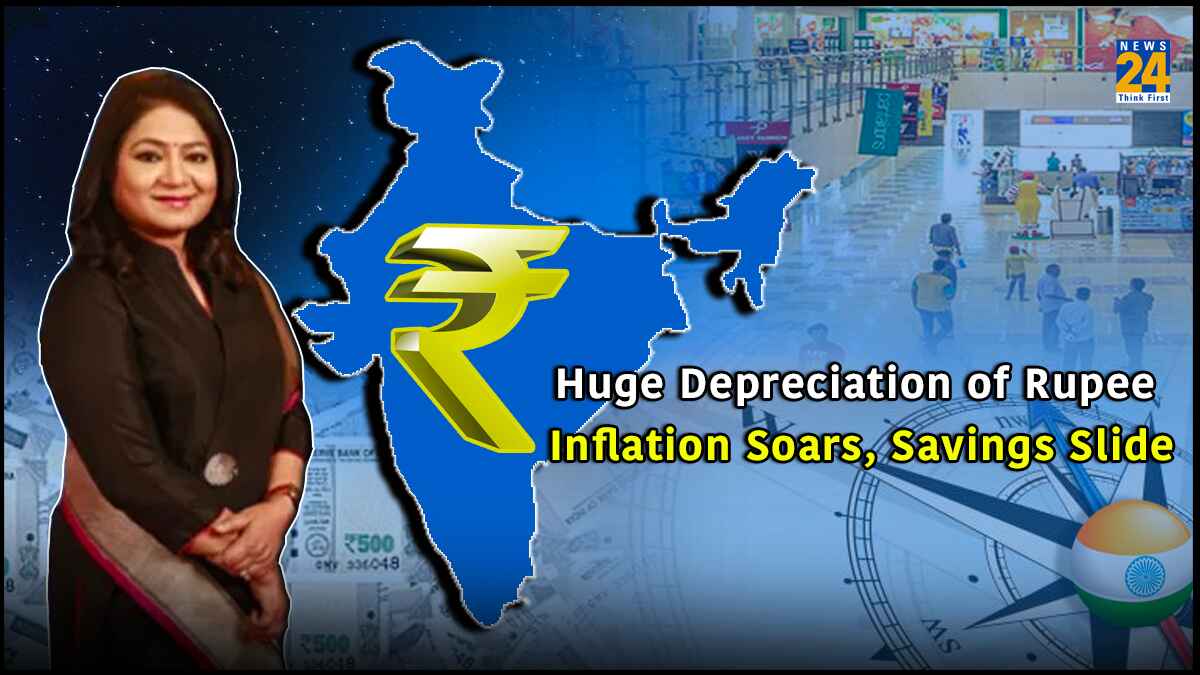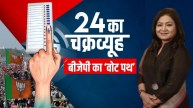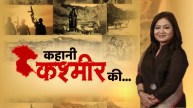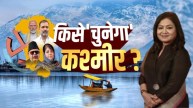– Anurradha Prasad
(CMD and Editor-in-Chief, News24)
How much do you save every month? Is your bank balance increasing or decreasing? Do you use your last saved money for today’s expense? If your answer is yes, then you aren’t alone. Millions of people are going through this and wondering why are they unable to save anything after the increment in their salary.
India ranks fifth in terms of GDP but the unemployment rate is at its highest in the last 40-50 years and savings are at their lowest level in the last 47 years. The graph of private equity investment has also decreased. Some engines, which play an important role in maintaining the pace of the country’s economy, are running fast and some are slow. The government’s debt burden is continuously increasing despite new records of income tax and GST collection, why?
The era of 1960s and 70s
Ask a 75 to 80-year-old what was the value of one rupee. At the time of independence, 10 kg of rice was available for one rupee. One could buy things like one kilo of ghee, two and a half kilos of sugar, or four liters of petrol for one rupee. If you had 20 rupees in your pocket, you could buy a shining bicycle. For Rs. 90 you could buy a 10-gram gold chain. Another truth is that at that time the minimum salary of a government employee was Rs 55.
But today, one would spend Rs. 500 on a single cup of coffee. Getting a movie ticket and popcorn in a multiplex for 500 rupees is a big deal. As people’s income increased with time, new ways of spending also emerged. Imagine the amount you will spend today if you go to buy the things that have been calculated for one rupee.
Net savings down to Rs 13.77 lakh crore
The recent report from the Reserve Bank on Household Assets and Liabilities clearly stated that if seen in terms of GDP, this year the net savings have come down to Rs 13.77 lakh crore. To put it another way, net household saving has come down to 5.1 percent, which is the lowest in the last five decades. Last year i.e. in 2021-22 it was 7.2 percent. This simply means that people’s savings are decreasing.
A research report by the State Bank of India says that in the last financial year, the debt burden on families in the country has increased and their saving capacity has halved. This situation can also be seen in a way that people’s income has increased in the last few years, but they are also taking loans to fulfill their hobbies, due to which savings have decreased. If this situation is applied to the country, the situation will be more or less similar.
Economists argue that people’s income has increased but new avenues of spending have also opened because of which money is not staying in people’s pockets. I closely know a person living in NCR who with an income of Rs 1 lakh, spends around Rs 30 thousand on home loan EMI and society maintenance, and about Rs 15 thousand goes into the EMI of the car. In metros, a car is not a luxury but a necessity. 10 thousand rupees are spent on petrol and maintenance. Rs. 20 thousand are spent on children’s school fees.
Some would call it a wasteful expenditure, others may find it necessary, and some may remember the Charvaka philosophy that we should live happily and spend on today as long as we have life. But, the bitter truth is that the winds that have blown in the last few years have changed the thinking and spending patterns of every person. Sometimes an attempt is made to look at it through the lens of rising inflation, sometimes to measure it through changes in lifestyle. A large number of employed youth entering the 21st century used to feel the difference by saying that their salary is in 5 digits. It could have been ten thousand or even 99 thousand 9 hundred 99 rupees. Whatever may be the era, most middle-class families always dream and plan imagining their increment. But usually, inflation increases more than their income.
The situation of the country is also similar to that of the middle class. Figures released from time to time indicate that India’s GDP is continuously increasing and it will become a 5 trillion economy within a few months. But, it is also true that the share of America and China in the world GDP is about 45 percent and that of India is about three percent. In such a situation, India’s economy is growing with time but the debt burden is also continuously increasing.
Important engines in running the economy
Be it an individual or a company, a small state or a huge country like India, the condition of the economy is more or less like a potter’s wheel. As long as the wheel keeps moving, the potter keeps crafting something according to his skill. In the same manner, four engines in particular play an important role in running the economy of any country. First, the purchasing power of consumers i.e. people. Second, the presence of investors and the environment for investment. Third, expenditure by the government, and fourth, export. On the path on which India has progressed in the last few years, the richest one percent of the country has more than 40 percent of the total wealth of the country. At the same time, after 50 percent of the population, the remaining accounts for only three percent of the total wealth.
Due to this economic inequality, the pace of private consumption and capital investment within the country is slowing down. An invisible effort is being made to steer the wheel of the country’s economy with the help of government schemes. In this, cash assistance directly reaching the accounts of farmers and women can also be counted. Due to this economic inequality, the pace of private consumption and capital investment within the country is slowing down. An invisible effort is being made to steer the wheel of the country’s economy with the help of government schemes. In this, cash assistance directly reaching the accounts of farmers and women can also be counted.
The common middle-class living in the urban lavish lifestyle has to take loans even to meet their basic needs. They sometimes fall into situations where to repay one loan they have to take another loan. If we look at this situation from the country’s point of view, there is a country like Japan that strengthened the economy of its country on the basis of loans. Japan’s debt is more than 250 percent of its GDP. At the same time, there are countries like Sudan, which are struggling under the burden of debt.
The debt of America, the world’s largest economic superpower, is 133 percent more than its GDP, while the debt of India is about 90 percent of the GDP. In our country, out of every rupee spent by the government, 20 paise is spent on repaying the loan, at the same time it is not possible to reduce other essential expenses too. In such a situation, be it government, company, or middle class, everyone is feeling relieved in taking loans to meet their needs.
But, the culture of taking loans for basic needs instead of saving is neither good for the future of any individual, any company, or the banking sector, nor for the future of the country. Widespread inequality in earnings is also not a good sign for any social fabric.
Watch the video:







